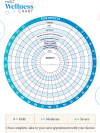Underserved Patient Populations With Metastatic Breast Cancer: A Review of Progress and Remaining Challenges
- PMID: 40625591
- PMCID: PMC12234164
- DOI: 10.1155/tbj/2461234
Underserved Patient Populations With Metastatic Breast Cancer: A Review of Progress and Remaining Challenges
Abstract
Breast cancer presents a significant risk to public health and is the primary cause of cancer-related death in women. Awareness of metastatic breast cancer (mBC) continues to increase, and advances have been made; however, challenges remain for many patient populations that do not receive equal opportunities along the treatment pathway. The Underserved Patient Population (UPP) Coalition Task Force, a group of international experts in mBC, held meetings between 2022 and 2023 to prioritise the needs of UPPs and propose solutions. The key unmet needs identified included the following: delayed diagnosis of mBC due to difficulties in the presentation of patients to the healthcare system and a lack of primary care physician and non-breast cancer specialist understanding of the signs and symptoms of mBC; difficulty navigating the mBC patient pathway due to suboptimal use of multidisciplinary care and limited communication between HCPs; unequal access to the most appropriate mBC treatment options and supportive therapy due to the unconscious bias of HCPs, and direct and indirect financial toxicity for patients; and negative impact on QoL resulting from the limited uptake of shared decision-making, low prioritisation of patient preferences and a lack of personalised care. This paper aims to shine light on initiatives supporting underserved patients with mBC, illustrate the remaining gaps in care and call upon the global community to change how care is delivered to UPPs.
Keywords: advanced breast cancer; health disparities; health inequity; metastatic breast cancer; unmet needs.
Copyright © 2025 Fatima Cardoso et al. The Breast Journal published by John Wiley & Sons Ltd.
Conflict of interest statement
Fatima Cardoso was in a consultancy role for Amgen, Astellas/Medivation, AstraZeneca, Celgene, Daiichi-Sankyo, Eisai, GE Oncology, Genentech, Gilead, GlaxoSmithKline, Iqvia, Macrogenics, Medscape, Merck-Sharp, Merus BV, Mylan, Mundipharma, Novartis, Pfizer, Pierre-Fabre, prIME Oncology, Roche, Sanofi, Samsung Bioepis, Seagen, Teva and Touchime. Rachel Wuerstlein was an advisor, consultant or speaker, or received travel grants from Agendia, Amgen, APOGHEVA, Aristo, Astra Zeneca, Aurikamed, Celgene, Clinsol, Clovis Oncology, Daiichi-Sankyo, Eisai, Eli Lilly, Esteve, Exact Sciences, FOMF, Gilead, GlaxoSmithKline, Hexal, MCI, MedConcept, MediSeminar, Medstrom Medical, MSD, Mundipharma, Mylan, Nanostring, Novartis, Odonate, Paxman, Palleos, Pfizer, Pierre-Fabre, PINK, Pomme Med, Puma Biotechnology, Riemser, Roche, Sandoz/Hexal, Sanofi Genzyme, Seattle Genetics/Seagen, Sidekick, Stemline, Tesaro Bio, Teva, Veracyte, Viatris and Wiley. Tomoyuki Aruga received lecture fees, honoraria or other fees from AstraZeneca, Chugai, Daiichi-Sankyo, Eli Lilly, Kyowa Kirin, MSD and Pfizer. Matteo Lambertini was in an advisory role for Roche, Eli Lilly, Novartis, AstraZeneca, Pfizer, Seagen, Gilead, MSD, Exact Sciences and Menarini; received speaker honorarium from Roche, Lilly, Novartis, Pfizer, Sandoz, Libbs, Daiichi-Sankyo, AstraZeneca, Takeda and Menarini; received travel grants from Gilead, Daiichi-Sankyo and Roche; provided research support to the Institution Gilead—outside the submitted work. Christine Benjamin was a paid participant of the Breast Cancer Steering Committee (Pfizer). Elisenda Llabrés Valentí was in a consultant or advisory role in Daiichi-Sankyo, Seagen; received research funding from AstraZeneca, Pfizer, Novartis and Roche; received speaker fees from AstraZeneca, Daiichi-Sankyo, Eli Lilly, Gilead, MSD, Novartis, Pfizer and Roche. Matti Aapro was the Past-President of the European Cancer Organisation, President of Sharing Progress in Cancer Care and President of All.Can. Generosa Grana was involved in the advisory board of Eli Lilly Oncology and Pfizer Oncology. Eduard Vrdoljak supported the clinical trials and scientific projects of AstraZeneca, BMS, Pfizer and Roche; received speaker fees and provided consulting for Amgen, Astellas, AstraZeneca, Boehringer Ingelheim, Johnson and Johnson, MSD, Merck, Novartis, Pharmaswiss, Pfizer, Roche, Sanofi and Servier. The remaining authors declare no conflicts of interest.
Figures






References
Publication types
MeSH terms
LinkOut - more resources
Full Text Sources
Medical
Miscellaneous

